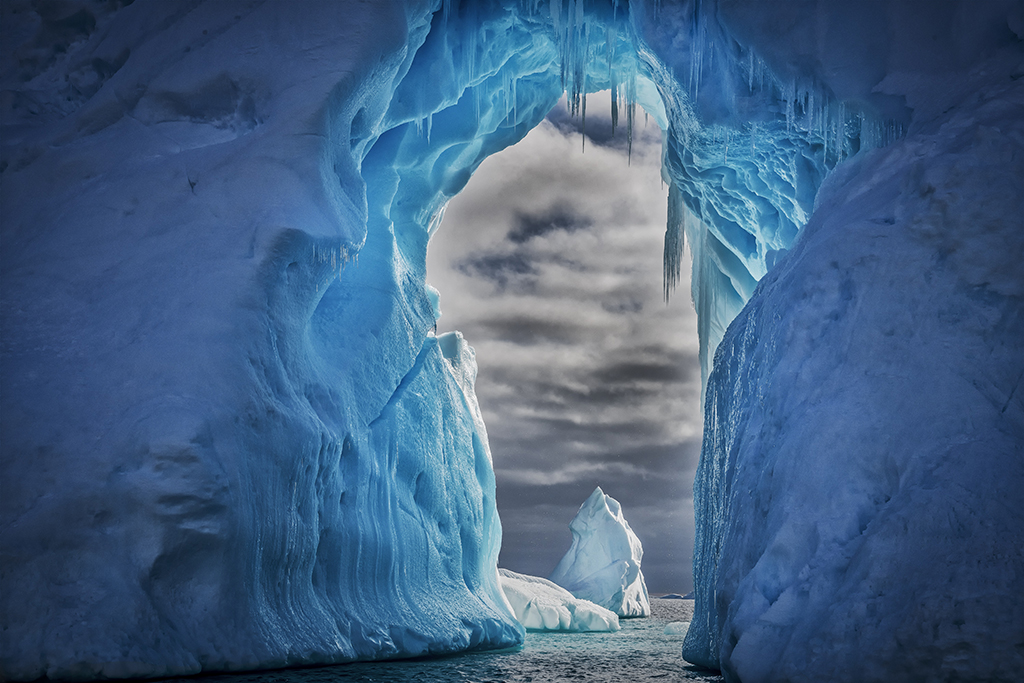
For several years, I had wanted to travel to Antarctica and explore the region photographically. Images that I had seen from this part of the Earth seemed truly otherworldly. In February 2019, I finally had a chance to go as part of a photo workshop led by John Paul Caponigro and Seth Resnick, two outstanding teachers. Travel to this region was a bit arduous, but the excitement of finally getting to see the southernmost part of the world more than overcame the long travel.
A day after we arrived in Punta Arenas, Chile, we flew to the Antarctica Peninsula. Later that day, we set sail on the icebreaker ship that we were to be housed on for the week. Each morning and afternoon, taking off from the base ship, we would travel by Zodiac boat in the area surrounding the Antarctic Peninsula to photograph incredible icebergs and the unique landscape.
Late one afternoon, we passed an impressive iceberg that was about eight to 10 stories high with an arch that had partially melted and then refroze, leaving icicles dangling from the top of the arch. While sailing past the opening of the arch, a second iceberg floated into view through the window of the arch. One of the great advantages of being with a group of photographers is that you can work with the Zodiac navigator to ideally position the boat for an optimal image on the open seas. The navigator in this instance slowed the Zodiac, allowing me to frame the second iceberg through the arch, and he made several passes so that I could place the second iceberg perfectly in the opening.
.jwplayer { margin-bottom: 20px; margin-left: auto; margin-right: auto; }
The fundamental trick to making iceberg photographs is that one needs to be quick and prepared for those moments when it all comes together. Since the boat is constantly in motion, as are the icebergs, getting a sharp image can be challenging, and all images must be made handheld. Selecting the best aperture for adequate depth of field, as well as a fast enough shutter speed, was foremost in my mind as I made this image. I had previously found that most images required a moderately large aperture and a fast shutter speed to work well. In this case, however, since I wanted sharpness for both the foreground iceberg as well as the rear iceberg, I had to stop the aperture down more than usual for front-to-back sharpness. I snapped a series of photos, and this image was the one I liked best.
While icebergs are often presumed to be white, they’re actually a shade of blue, which becomes exaggerated when they’re seen and photographed in shadow. The final image still needed some dodging and burning to control the contrast, but I was able to manage this reasonably well in post-processing. It’s a favorite of mine from that trip, though I returned home with a wonderful selection of photographs.
See more of Alan Spitzer’s work at aspitzerimages.com.
Nikon D850, AF-S NIKKOR 24-120mm f/4G ED VR. Exposure: 1/800 sec., ƒ/13, ISO 200.
<!–  Text & Photography By Alan Spitzer –>
Text & Photography By Alan Spitzer –>